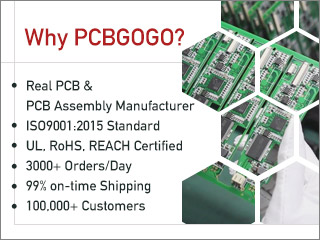The electronics industry has a dirty secret: it’s built on a foundation of chemicals, energy, and waste. For decades, the focus has been on making devices smaller, faster, and cheaper, with little regard for the environmental consequences. But as global regulations tighten and consumer awareness grows, the PCB industry is facing a new, non-negotiable challenge: becoming green. This isn't a simple trade-off between sustainability and performance; it's a fundamental shift that is proving that the two can, and must, coexist.
The journey toward a sustainable PCB isn't just about using less; it's about reimagining the entire manufacturing process.
1. Sustainable Materials: The Foundation of a Greener Board
The most significant environmental impact of a PCB begins with its core materials. Traditional boards rely on flame retardants like bromine and lead-based solders, both of which are toxic and difficult to dispose of. But a new generation of materials is changing the game.
Lead-Free Laminates: The shift to lead-free solders (e.g., tin-silver-copper alloys) mandated by regulations like RoHS was a major step. Initially, these alternatives had issues with thermal stability. Today, advanced formulations have solved these problems, providing the same, if not better, reliability. This is crucial for high-stress applications like automotive and medical devices.
Recycled and Bio-Based Substrates: Innovative companies are exploring alternatives to traditional epoxy resins and fiberglass. Some are using recycled glass fiber from old electronics to create new substrates, reducing the demand for virgin resources. Others are developing bio-based resins derived from sustainable sources, offering a less toxic and more biodegradable option. This is a game-changer for reducing the industry’s reliance on petroleum-based products.
2. Leaner Production: Minimizing Waste at the Source
The manufacturing process itself is a major source of pollution, particularly from chemical use and water consumption. The move toward "lean manufacturing" in the electronics industry has a powerful environmental side-effect: what's good for efficiency is often good for the planet.
Closed-Loop Water Systems: PCB fabrication uses vast amounts of water for cleaning and rinsing. A decade ago, much of this was treated and discharged. Modern factories now use advanced filtration and ion exchange systems to recycle up to 90% of their process water. This not only dramatically reduces water consumption but also cuts down on the costs associated with treating and disposing of chemical-laden wastewater.
Energy-Smart Factories: Reducing power consumption is both an environmental and economic win. Factories are adopting technologies like variable speed drives for machinery and LED lighting, and some are even installing on-site solar panels. Beyond the hardware, data analytics can optimize production schedules to avoid peak energy hours, proving that a smarter process is a greener process.
3. The Digital Revolution: Precision for the Planet
The rise of Industry 4.0 and digital tools has brought a new level of precision to manufacturing, which directly translates to less waste.
Process Control with AI: Machine learning algorithms can monitor and adjust etching times and chemical concentrations in real time. This prevents over-etching, which wastes valuable copper, or under-etching, which leads to costly rework. This kind of precise control can reduce a factory’s scrap rate by several percentage points, saving materials and energy with every board.
Digital Twin Simulation: Before a single piece of copper is etched, a "digital twin" of the PCB can be simulated. This allows designers to test layouts virtually, identifying potential issues and optimizing material usage. For instance, designers can fine-tune layer stacking to reduce the amount of copper needed per board, saving resources and speeding up the prototyping phase.
Conclusion: Leading by Example
The transition to eco-friendly manufacturing isn't a distant goal; it's happening right now. At PCBgogo, we believe that being a leader in the PCB industry means being a leader in sustainability. We’ve invested heavily in adopting these green practices, not just to meet regulations, but because it's the right thing to do—for our customers, for our business, and for the planet.
For us, balancing high performance with green manufacturing isn't a trade-off. We've implemented lead-free production lines that reduce hazardous waste by over 40% while maintaining our 24-hour quick-turn speeds. Our AI-optimized etching processes minimize chemical usage and material waste, and we've established partnerships with recyclers to ensure our scrap materials get a second life. We believe the most efficient PCB is one that not only performs flawlessly but also contributes to a more sustainable future. This is our commitment, and we are proud to be building the next generation of electronics with a focus on both quality and care for the environment.


